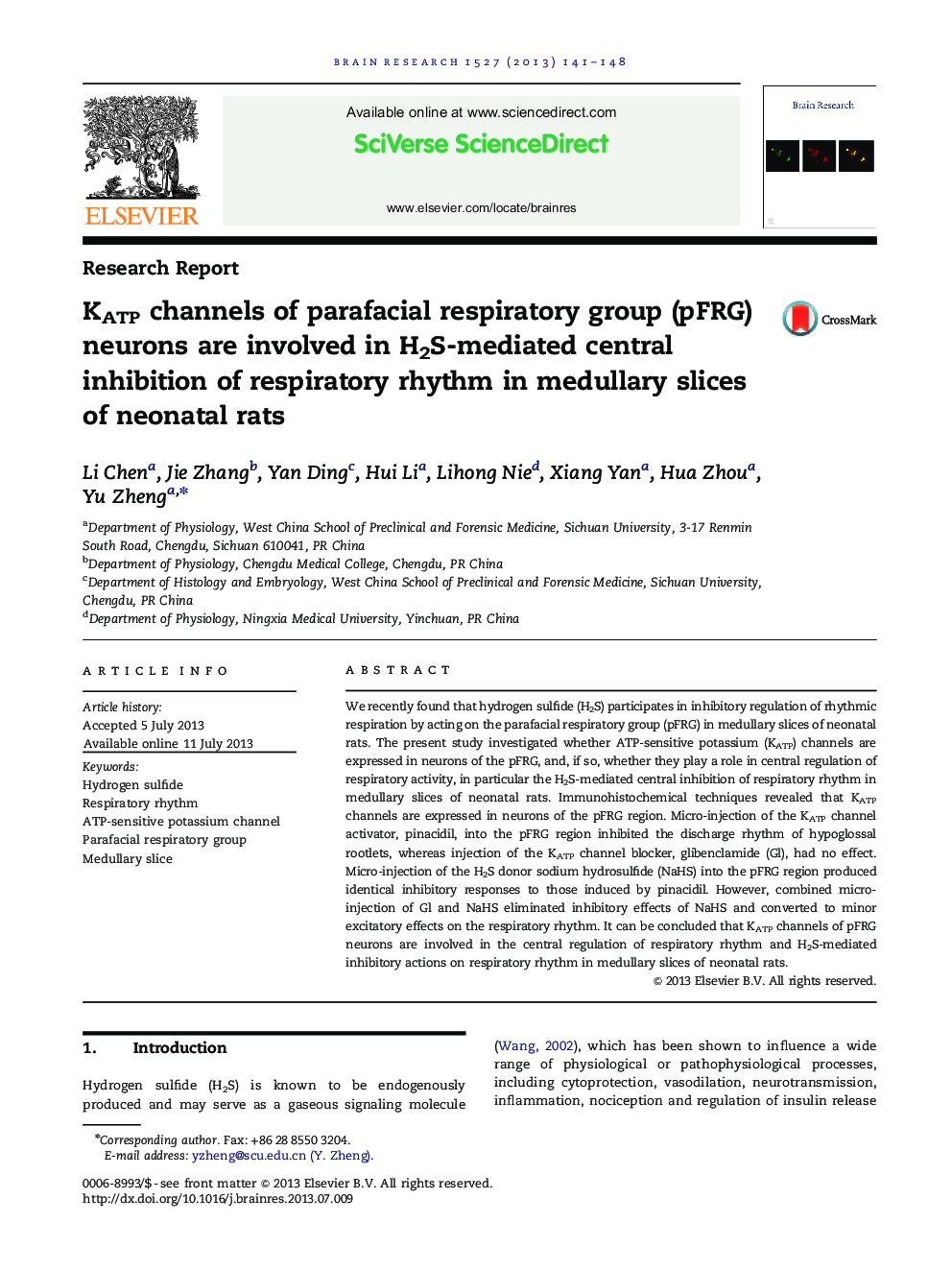| Article ID | Journal | Published Year | Pages | File Type |
|---|---|---|---|---|
| 4324580 | Brain Research | 2013 | 8 Pages |
•KATP channels are expressed in neurons of the pFRG.•Micro-injection of pinacidil into the pFRG inhibited respiration.•Micro-injection of NaHS into the pFRG inhibited respiration.•Combined micro-injection of glibenclamide and NaHS excited respiration.
We recently found that hydrogen sulfide (H2S) participates in inhibitory regulation of rhythmic respiration by acting on the parafacial respiratory group (pFRG) in medullary slices of neonatal rats. The present study investigated whether ATP-sensitive potassium (KATP) channels are expressed in neurons of the pFRG, and, if so, whether they play a role in central regulation of respiratory activity, in particular the H2S-mediated central inhibition of respiratory rhythm in medullary slices of neonatal rats. Immunohistochemical techniques revealed that KATP channels are expressed in neurons of the pFRG region. Micro-injection of the KATP channel activator, pinacidil, into the pFRG region inhibited the discharge rhythm of hypoglossal rootlets, whereas injection of the KATP channel blocker, glibenclamide (Gl), had no effect. Micro-injection of the H2S donor sodium hydrosulfide (NaHS) into the pFRG region produced identical inhibitory responses to those induced by pinacidil. However, combined micro-injection of Gl and NaHS eliminated inhibitory effects of NaHS and converted to minor excitatory effects on the respiratory rhythm. It can be concluded that KATP channels of pFRG neurons are involved in the central regulation of respiratory rhythm and H2S-mediated inhibitory actions on respiratory rhythm in medullary slices of neonatal rats.
